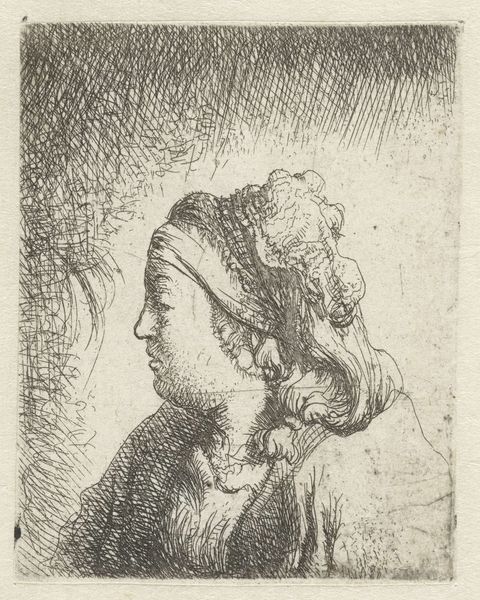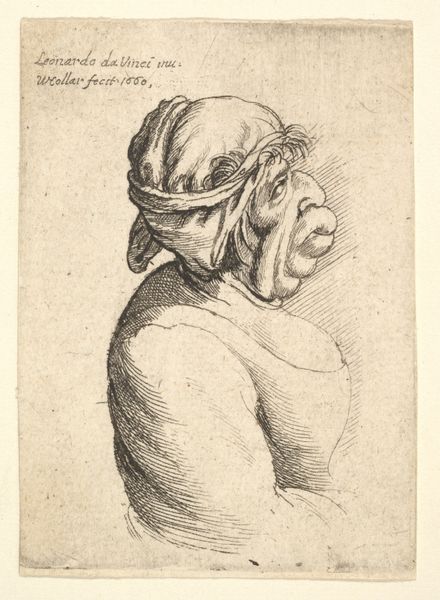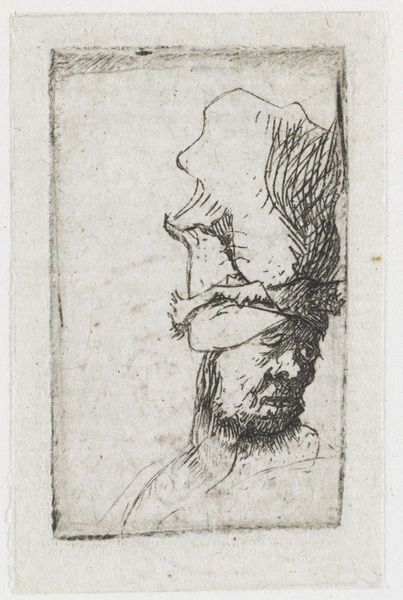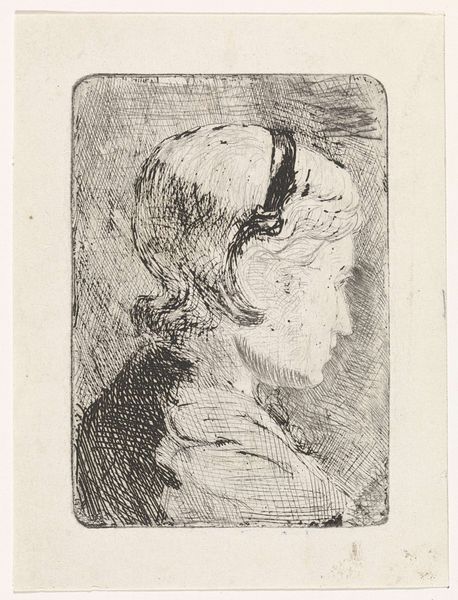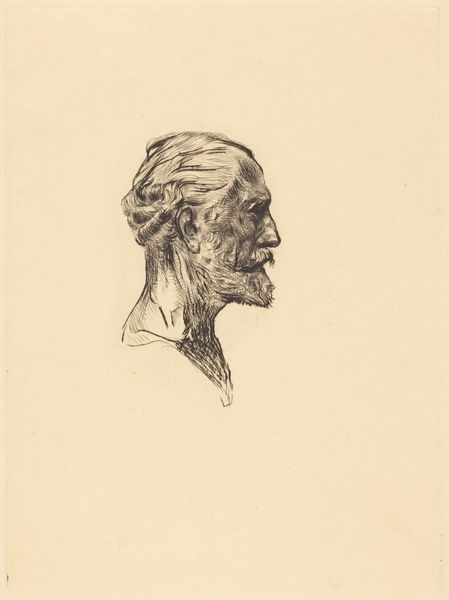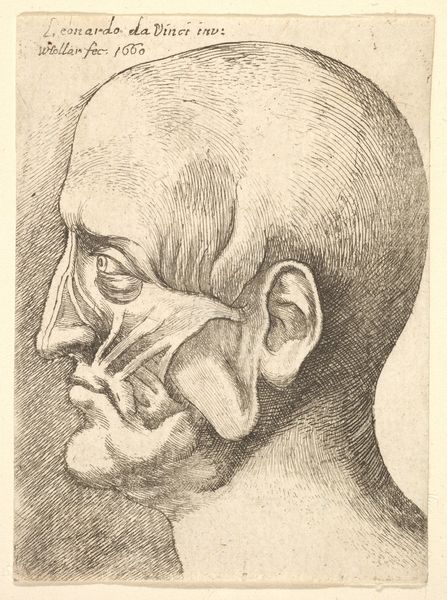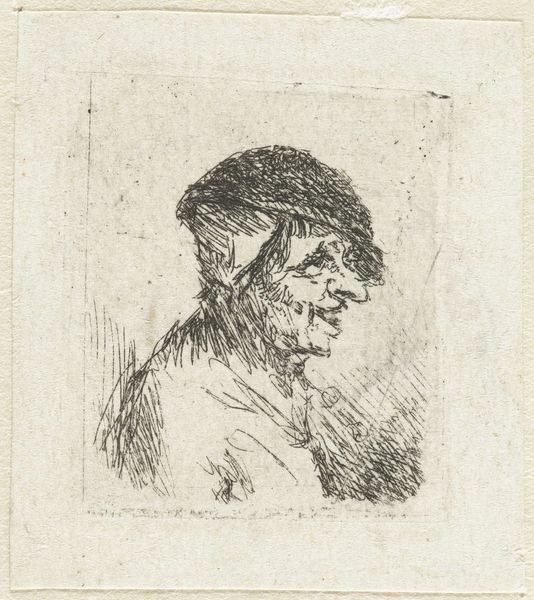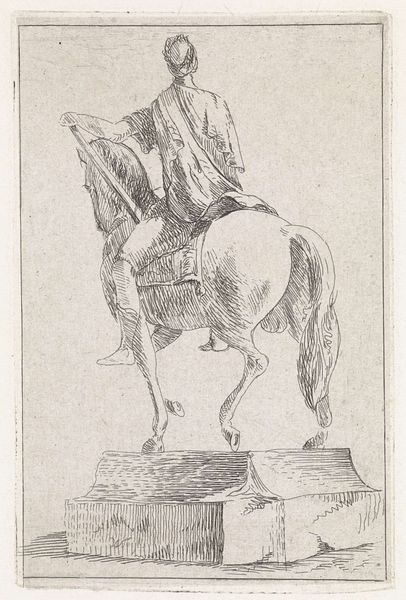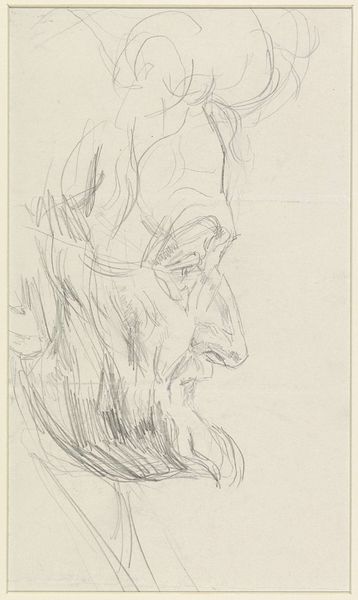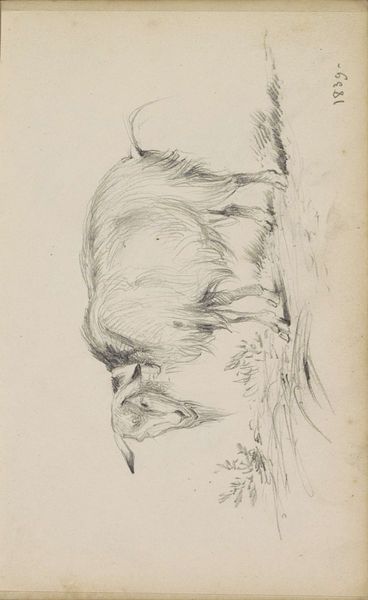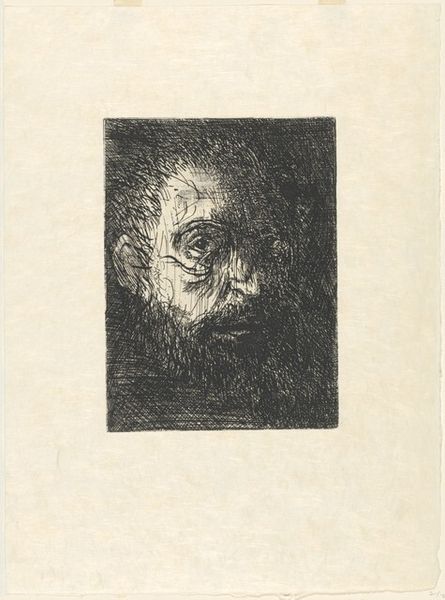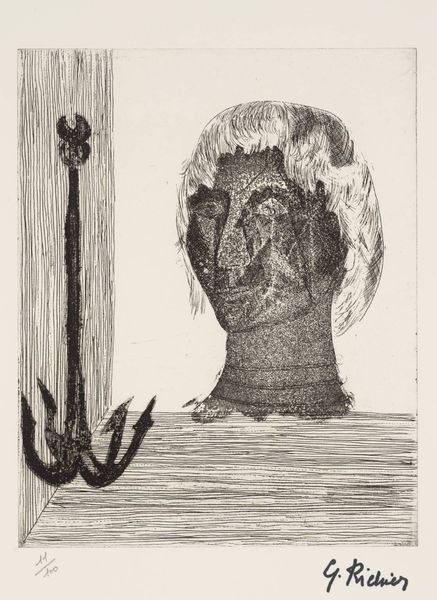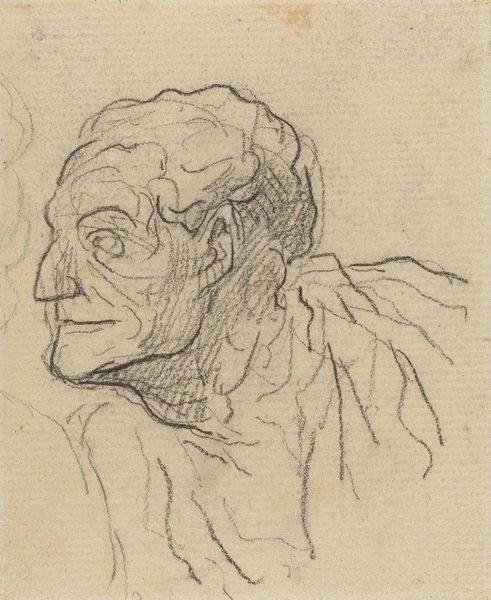
Dimensions: height 112 mm, width 90 mm
Copyright: Rijks Museum: Open Domain
Editor: Here we have “Head of a Woman, Seen from Behind,” a print, engraving in fact, made sometime between 1758 and 1787, currently residing at the Rijksmuseum. It's striking how the artist captures the delicate curve of her neck, almost vulnerable. What story do you think this work tells? Curator: I see a study in representation, not just of a woman, but of a social order that often relegated women to the background – literally, as we only see the back of her head. Consider the time, the late 18th century: What opportunities were afforded to women? Were they artists, scholars, decision-makers? Or were they primarily subjects to be viewed, wives, mothers, ornaments? Editor: That’s a perspective I hadn’t considered. I was focusing on the aesthetic, the skill of the engraving, rather than the societal implications. Curator: Exactly! And it’s crucial to acknowledge the power dynamics inherent in portraiture, especially when considering the female gaze, or, in this instance, the averted gaze. Who controlled the narrative then, and who controls it now as we interpret this piece? Does her averted gaze represent an escape, or an imposition? What kind of dialogue do we create by reflecting and analyzing this context? Editor: That’s really impactful. Thinking about the agency, or lack thereof, the subject possessed reframes the entire image. So, her not facing us isn't just an artistic choice; it's a statement – or perhaps a question – about the limited roles available to women during that era. Curator: Precisely. It's a starting point to challenge the art historical canon and create inclusive spaces. Editor: Thank you! That shifted my perspective entirely; I’ll never look at another portrait the same way.
Comments
No comments
Be the first to comment and join the conversation on the ultimate creative platform.
